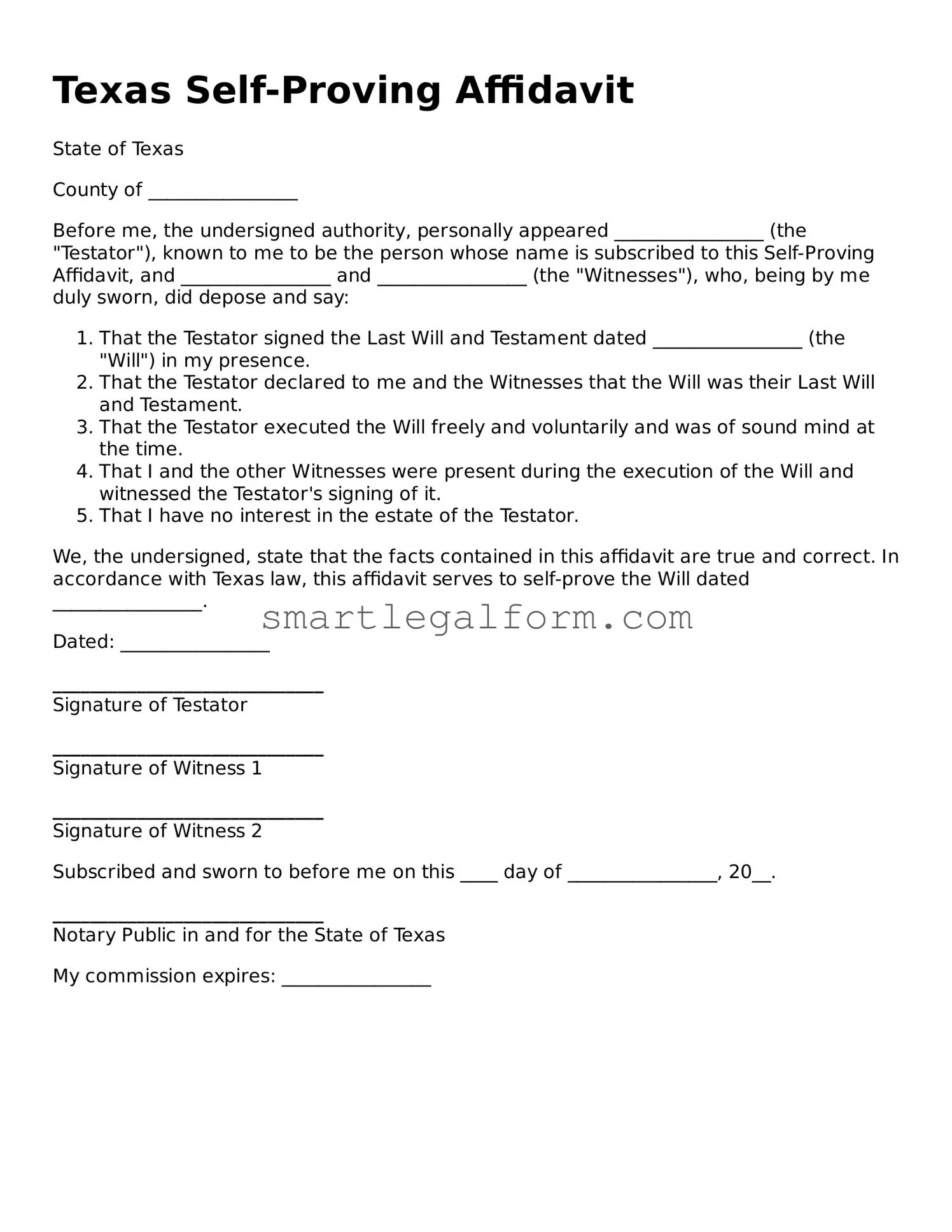Texas Self-Proving Affidavit
State of Texas
County of ________________
Before me, the undersigned authority, personally appeared ________________ (the "Testator"), known to me to be the person whose name is subscribed to this Self-Proving Affidavit, and ________________ and ________________ (the "Witnesses"), who, being by me duly sworn, did depose and say:
- That the Testator signed the Last Will and Testament dated ________________ (the "Will") in my presence.
- That the Testator declared to me and the Witnesses that the Will was their Last Will and Testament.
- That the Testator executed the Will freely and voluntarily and was of sound mind at the time.
- That I and the other Witnesses were present during the execution of the Will and witnessed the Testator's signing of it.
- That I have no interest in the estate of the Testator.
We, the undersigned, state that the facts contained in this affidavit are true and correct. In accordance with Texas law, this affidavit serves to self-prove the Will dated ________________.
Dated: ________________
_____________________________
Signature of Testator
_____________________________
Signature of Witness 1
_____________________________
Signature of Witness 2
Subscribed and sworn to before me on this ____ day of ________________, 20__.
_____________________________
Notary Public in and for the State of Texas
My commission expires: ________________
